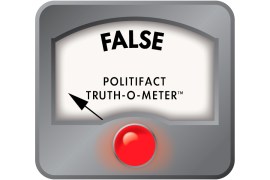Happy Friday! And Happy Valentine’s Day, where we at KHN have compiled some of the best #HealthPolicyValentines from Twitter (this seems the right group for that level of wonkiness!). Check out some great ones, like this from Laura Marston:
“One vial a week
Keeps me alive
Used to cost $20
Now it’s $275.”
Now on to equally fun things, like budgets!
President Donald Trump released his proposed budget this week with only the vaguest of a health care plan mentioned. A mystery pot of $844 billion signaled deep cuts to Medicaid and subsidies under the health law. In particular, an obscure passage referred to “ending the financial bias that currently favors able-bodied working-age adults over the truly vulnerable.” Critics were scratching their heads how the released budget aligned with Trump’s promise to protect people’s coverage. “You can’t cut $1 trillion from these programs and protect the most vulnerable,” said Aviva Aron-Dine of the Center on Budget and Policy Priorities.
The Associated Press: Mystery $844B Pot in Trump Budget Signals Medicaid Cuts
The budget also calls for an almost 16% cut to the CDC (yes, the agency handling the coronavirus outbreak). But top officials say that’s because the administration wants the CDC to narrow its focus to its core mission of preventing and controlling infectious diseases and handling public health crises.
The Washington Post: Trump Budget Cuts Funding for Health, Science, Environment Agencies
Trump also wants to cut the budget for the National Institutes of Health by 6.5%. (Yes, that would affect the National Institute of Allergy and Infectious Diseases, which is working on a vaccine for the coronavirus.)
The Wall Street Journal: Trump Proposes $4.8 Trillion Budget, With Cuts to Safety Nets
Another odd little nugget in the budget: Trump wants to strip the FDA of its authority over tobacco products and create an agency within HHS solely for that purpose.
Stat: Trump Doesn’t Want the FDA to Regulate Tobacco
For a full breakdown of the budget’s details, check out our roundup here.
This week, the coronavirus strain got an official name, which is — drum roll, please —COVID-19. Although the announcement probably set off celebrations among scientists and researchers who have been driven up a wall because everyone has been simply calling it “coronavirus,” I am here to report that a day into its official designation 95% of headlines are stilling using only the generic term.
— It is, however, important to note that WHO officials were careful not to name the disease after a particular region or people so as to avoid further stigmatization surrounding any outbreaks.
Time: What’s in a Name? Why WHO’s Formal Name for the New Coronavirus Disease Matters
— As the death toll climbs in China, officials have expanded their “wartime” campaign to round up all the people who may be infected. But, as you can imagine, that is not going perfectly. Not only is it stoking tensions among an angry and scared nation whose residents aren’t happy with how the government is handling the crisis, but also it’s thrusting people who haven’t even tested positive for the virus into situations where they become vulnerable to infection.
The New York Times: China Expands Chaotic Dragnet in Coronavirus Crackdown
— Readers of The Friday Breeze know I’ve been harping on the fact that our national attention has been focused on COVID-19 even though we have only 15 (non-fatal) confirmed cases of it here and the common flu is far more deadly to us. Well, there’s a psychological basis for why we tend to panic over things that statistically are unlikely to affect us. Pretty much we can be terrible at accurately assessing risk.
The New York Times: Coronavirus ‘Hits All the Hot Buttons’ for How We Misjudge Risk
— It was a bit of a roller-coaster week with data coming out of China. At first, it seemed the cases were slowing down, but then the diagnostic criteria were tweaked, and all of a sudden we had nearly 15,000 cases added in one night.
The New York Times: Coronavirus Cases Seemed to Be Leveling Off. Not Anymore.
— CDC Director Robert Redfield said that the United States is essentially trying to buy time with its containment strategy, but it is quite likely there will eventually be person-to-person transmission of the virus here. (Which means people other than evacuees from Wuhan will start getting it.)
Stat: CDC Director: More Person-To-Person Coronavirus Infections in U.S. Likely
— And you can see how easily that could happen, given a U.S. evacuee was mistakenly released from the hospital even though she was infected with the coronavirus.
CNN: First US Evacuee Infected With Coronavirus Was Mistakenly Released From Hospital
— In an update from the cruise from h-e-double-hockey-sticks: Tensions continue to rise along with COVID-19 cases among the passengers and crew of a ship quarantined off the coast of Japan. As one health official said this week: Remember, quarantines are to keep those outside of its boundaries safe, not those within.
The New York Times: Quarantined Cruise Passengers Have Many Questions. Japan Has Few Answers.
— WHO has been heaping praise on China for its response to the crisis. And while other experts acknowledge the organization is in the tenuous position of not wanting to anger China enough that they break off relations, critics say the excessive compliments are setting a bad precedent about what a good pandemic response looks like.
The Wall Street Journal: The World Health Organization Draws Flak for Coronavirus Response
— Meanwhile, the coronavirus research filed is quite small. That’s because, despite the buzz these kinds of outbreaks create, eventually the world’s attention will be caught by a different shiny object and both the funding and interest in researching the virus will fade.
Stat: Fluctuating Funding and Flagging Interest Hurt Coronavirus Research
Supporters of Sen. Bernie Sanders (I-Vt.) got their wrists slapped by a powerful Nevada union this week for “viciously attacking” members and their families online. At the heart of the matter: The union had released information critical of Sanders’ “Medicare for All” plan. The clash put Sanders — who denounced any harassment as “unacceptable” — in an awkward spot just before the Nevada caucuses next week.
Politico: Nevada Culinary Union Lays Into Sanders Supporters After Health Care Backlash
A new survey found that even when patients plan ahead, many are still hit with surprise medical bills, especially if they receive anesthesia during a procedure. With health care spending rising again (driven by high costs like the out-of-pocket price tag for an emergency room visit), the report is a reminder that the issue is likely to be top of mind with voters come November.
Meanwhile, lawmakers well aware of that fact are moving forward with legislation that would favor an arbitration method for dealing with the surprise costs. This strategy is favored by hospitals and providers, and not embraced by insurers.
Reuters: Surprise Surgery Bills Happen Even When Patients Plan Ahead
Modern Healthcare: House Committee Advances Provider-Friendly Surprise Billing Fix
In a little bit of breaking news, a federal appellate court just shut down CMS’ approval of Arkansas’ Medicaid work requirement. The panel upheld a lower-court ruling that found the requirements arbitrary and capricious.
Modern Healthcare: D.C. Circuit Nixes Arkansas Medicaid Work Requirement
Juul has vowed time and again that it hasn’t marketed its products to teenagers. But new revelations from a Massachusetts lawsuit that the vaping company bought ads on Nickelodeon and the Cartoon Network are challenging those promises.
The New York Times: Juul Bought Ads Appearing on Cartoon Network and Other Youth Sites, Suit Claims
The VA is no stranger to controversy, but the latest bout comes at a bad time for the agency. The abrupt firing of the agency’s well-liked undersecretary in combination with allegations that VA Secretary Robert Wilkie sought to dig up dirt on a woman after she said she was sexually assaulted at a VA facility have shaken the agency just as it is preparing to launch an ambitious health plan.
The New York Times: Veterans Affairs, a Trump Signature Issue, Is Facing Turmoil Again
Meanwhile, Trump continued to downplay brain injuries sustained by troops from an Iran missile strike even as the number of cases jumped past 100.
The New York Times: More Than 100 Troops Have Brain Injuries From Iran Missile Strike, Pentagon Says
In the miscellaneous file for the week:
— It’s notoriously hard to get any gun measures passed … except these advocates seem to be having some success. Their strategy? Go hyper-local.
NBC News: How Moms Are Quietly Passing Gun Safety Policy Through School Boards
— What’s going on with the Equal Rights Amendment and why has it become a fight over abortion? Politico takes a deep dive into its history about how the battle around the amendment has shifted in the nearly 40 years since it was introduced.
Politico: How the Debate Over the ERA Became a Fight Over Abortion
— New parents eager to better balance family and work life in the only industrialized country in the world without a paid family leave policy have started bringing their babies to their offices.
Stateline: You Can Bring Your Baby to Work (But Wouldn’t You Rather Be at Home?)
— In another crushing disappointment, an Alzheimer’s drug that had sparked high hopes was the latest to fail to live up to expectations.
The Associated Press: Drugs Fail to Slow Decline in Inherited Alzheimer’s Disease
That’s it from me. And remember, if you ever feel like flexing your poetic muscles outside of Valentine’s Day, we accept haiku submissions year-round. Have a great weekend!







